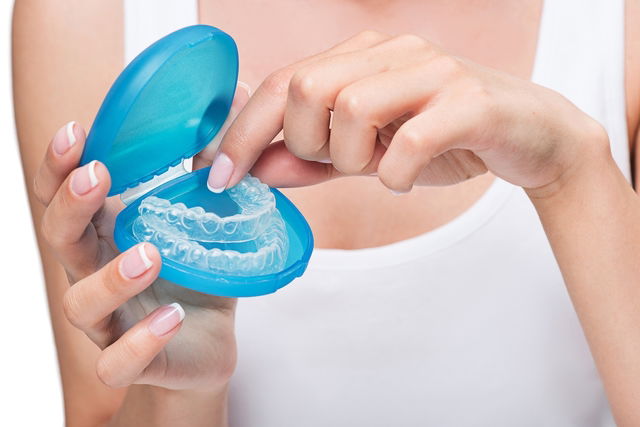TMJ treatment is usually targeted on the underlying cause of pain. Some approaches include relieving pressure on the joint, facial muscle relaxation techniques, physiotherapy or, in more serious cases, surgery.
It is also important to identify any habits that may trigger pain, like biting your nails, biting your lips or clenching your teeth, resting your chin in your hand or chewing on gum or hard objects.
The TMJ or temporomandibular joint is responsible for mouth and jaw movements. Malfunctioning in this joint can lead to symptoms like jaw pain, frequent headaches and clicking or dislocating of the jaw when opening the mouth

Treatment options
The main treatments TMJ are:
1. Using mouth guards
Using mouth guards can help to relax the jaw muscles, stabilizing the joint and protecting the teeth.
Generally, these mouth guards are made of custom-made acrylic, and are especially recommended for people who have bruxism. This condition is characterized by unconscious clenching or grinding of the teeth, especially during sleep, which can cause tooth wear and trigger TMJ pain.
Mouth guards also help to reduce pain and muscle tension in the jaw region, and prevent headaches caused by teeth grinding.
2. Physiotherapy
Physiotherapy is very important for reducing inflammation and increasing the strength and stability of the TMJ to reduce pain.
The physiotherapist will indicate a treatment which can vary with each case. It may involve performing exercises, osteopathy, electrical stimulation, ultrasound therapy, infrared therapy, heat or cold therapies, electrotherapy or low intensity lasers.
When the cervical spine is involved, some osteopathy sessions may be useful to reposition and reduce inflammation in both the cervical and jaw joints.
3. Use of medications
Your doctor or dentist can prescribe medications, like analgesics and anti-inflammatories to relieve pain flare-ups. For intense pain, the doctor may consider a muscle relaxant, such as cyclobenzaprine, to reduce tension in the muscles.
Other medications that your doctor dentist can prescribe include:
- Anxiolytics, such as clonazepam or diazepam, to help reduce muscle spasms and severe bruxism
- Anticonvulsants, such as gabapentin, to reduce chronic pain
- Antidepressants, such as amitriptyline, to relieve chronic pain
- Oral corticosteroids, for approximately 5 to 7 days, in cases of severe inflammation in the TMJ associated with autoimmune diseases.
Your doctor may also advise corticosteroid injections directly into the temporomandibular joint to reduce pain if other treatments have not been effective. However, this treatment can lead to cartilage damage, and the number of injections are therefore limited.
Other injections that may be indicated are the injection of hyaluronic acid into the jaw joint or botox into chewing muscles. These can help to reduce inflammation, relieving pain, in the most serious cases.
4. Psychotherapy
Stress and anxiety can contribute to bruxism and tension in the jaw muscles, therefore, it is important that these conditions are well-managed to allow for effective TMJ treatment. You should seek an assessment with a psychotherapist or psychologist to help relieve stress and anxiety that may contribute to jaw pain.
Other relaxation modalities that can help reduce tension include meditation, acupuncture, listening to music, reading or other hobbies that promote your well-being.
5. Laser therapy
Laser therapy is a new treatment technique used for temporomandibular disorders. It has analgesic, anti-inflammatory and healing effects that stimulate blood circulation to affected muscles. It can be very useful for relieving TMJ symptoms.
6. Surgery
Surgery to treat TMJ disorders is only considered for specific or serious cases, such as pain caused by a fracture or a major deformity in the face.
Some surgeries that can be performed by an oral and maxillofacial surgeon include:
- Arthrocentesis, performed with local anesthesia, generally in cases where the jaw joint suddenly locks;
- Arthroscopy, performed under general anesthesia, to remove inflamed tissue and realign the joint;
- Open surgery, such as discectomy or condylotomy, performed under general anesthesia, to remove or reposition the displaced joint disc, or completely replace the joint.
Surgery may also be indicated when symptoms are intense and there has been no improvement with other treatments, although this is rare.
